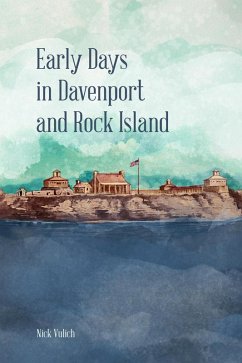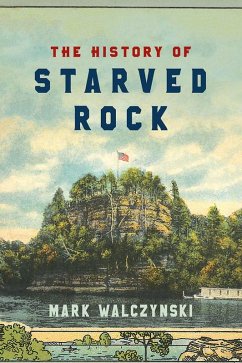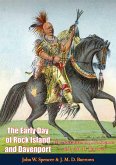Early Days in Davenport and Rock Island looks at twelve people who made their mark on the Quad Cities. Some you know. Others are lost to history. Black Hawk and Keokuk are the Sac and Fox chiefs who inhabited the area along the Mississippi and Rock Rivers when the first settlers arrived. Keokuk understood that it was impossible to beat the whites and did his best to work with them. Black Hawk was a cantankerous, proud old man who loved his lands and refused to give them up. Things came to a head in 1832. The whites chased Black Hawk and the British Band out of Illinois in what would become known as the Black Hawk War. George Davenport came to Rock Island in 1816 as a sutler to the troops who built Fort Armstrong. Two years later, he set off on his own trading with the Winnebago, Sac, and Fox tribes. He built his home on Rock Island, not far from Fort Armstrong, and over time became one of the richest, most powerful men in the area. Antoine Le Claire came to Fort Armstrong in 1818 as an Indian interpreter. William Clark, Governor of the Louisiana Territory, sent him to Father Neil's School for Boys in St. Louis to learn English. Le Claire spoke seventeen Indian dialects, as well as French, English, and Spanish. He served as a translator at over a dozen treaty negotiations and won the respect of all the tribes. The Indians rewarded Le Claire by gifting him two tracts of land where the city of Moline now sits and two more on the present sites of Le Claire and Davenport. After the Black Hawk War, he turned his talents to town building. When he died in 1861, Antoine Le Claire was thought to be the richest man in Iowa. Thomas Forsyth began trading with the Indians in the late 1790s. He served as the Indian agent at Peoria during the War of 1812. He became the Indian agent at Fort Armstrong in 1817. From his first days on the island, Forsyth tried to convince the Indians to relocate west of the Mississippi. Most of the time, it was like talking to a wall. Eventually, Keokuk and Wapello moved their people across the river - only Black Hawk refused. John Buford grew up in Rock Island in the 1830s and 1840s. His father was a state senator. Two of his brothers served as mayors of Rock Island. His half-brother, Napoleon Bonaparte Buford, rose to major general during the civil war. John Buford graduated from the United States Military Academy at West Point in 1848. He served at Jefferson Barracks, Missouri, then in Texas, New Mexico, and Utah. He is credited with picking the site for the battle of Gettysburg, then delaying the rebel troops for two hours, giving Generals Meade and Reynolds time to move their troops up. Reverend Ned Lee started the People's Union Mission in Davenport's Bucktown District in 1895. Rather than give people advice, Lee gave them what they needed, whether it was clothing, food, or just a good time at one of his outings. He started out speaking at local churches. Sunday after Sunday, Lee talked about his mission work and what could be done. After that, he took his message to local businessmen. The funny thing was the churches embraced his mission work, but the saloon owners gave him the money to fund his mission. Over time, the People's Union Mission morphed into the Davenport Friendly Society or the Friendly House. There's more, but you get the idea. These are just a few of the Quad City people who made the area what it is today.
Dieser Download kann aus rechtlichen Gründen nur mit Rechnungsadresse in A, B, CY, CZ, D, DK, EW, E, FIN, F, GR, H, IRL, I, LT, L, LR, M, NL, PL, P, R, S, SLO, SK ausgeliefert werden.









